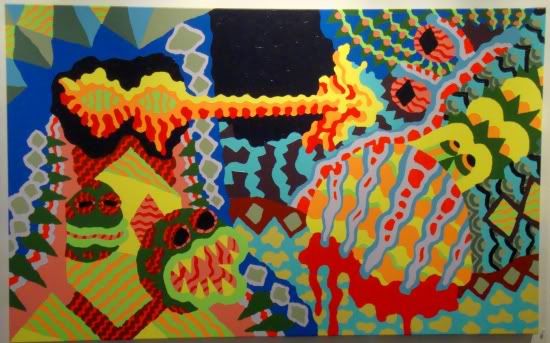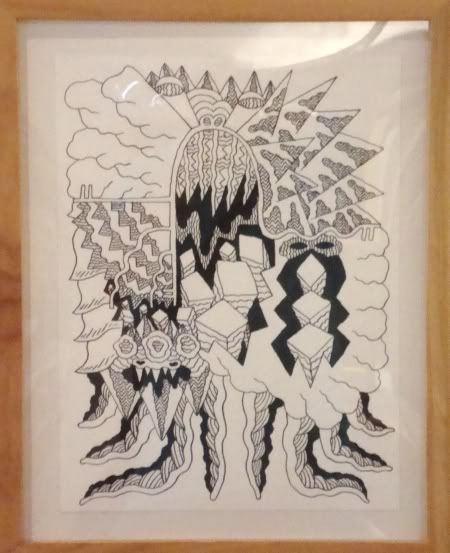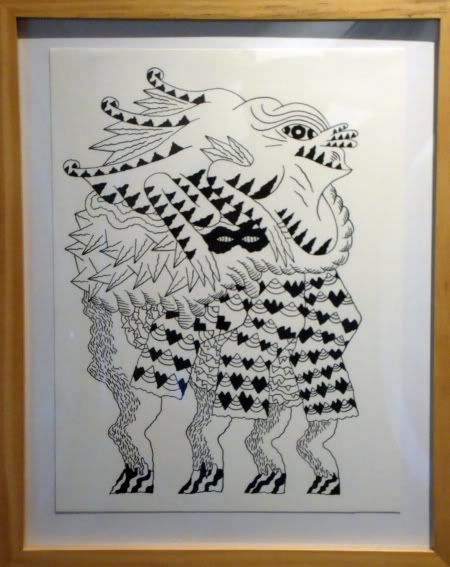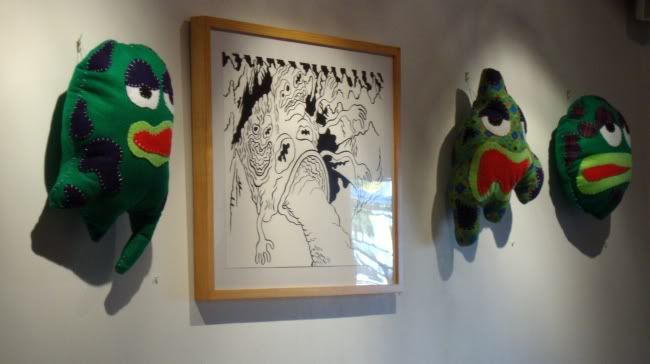Since 2006 William Cardini has been slowly developing the mythology of the hyperverse through his videos, comics, drawings, paintings, and writing. The hyperverse is a realm filled with immensely powerful inhuman beings who battle over worlds with strange geologies and hoard advanced technologies left by ancient starfarers. On the planets of the hyperverse, mountains shift from molten to crystal between moments and clumps of rock are inhabited by malevolent intelligences ready to hurl face-melting spells. Everything is in flux in this cosmos of constant magical warfare.My first reaction to this is that it seems pretty dumb, the kind of thing I--a sci-fi and fantasy loving kid--would have dreamed up in 7th grade and abandoned (or turned into something more satirical by 10th grade). You get this kind of sci-fi video-game world making a lot from the guys in Fort Thunder. In something like Multiforce by Mat Brinkman or Ninja by Brian Chippendale, you have a certain level of irony and satire. In Chippendale's work, specifically, you have a deliberate attempt to engage with his childhood self as well. These things give their work a greater level of complexity--engaging childhood doesn't require regressing into it.
I don't see that in an obvious way in Hensel's work. I seriously doubt that what you see is what you get--I suspect there is something more going on. But what? It may be that seeing a small slice of his work in Domy's tiny gallery space doesn't allow one to really dig deep into Hensel's whole project, whatever it may be.
On the other hand, he may have simply and narrowly set for himself a project of producing work that deliberately recalls (to the point of being indistinguishable from) being 12 years old, living in a largely girl-free world of his own imagination. Is there value in that approach? The proof is on the wall.

Mark P. Hensel (aka William Cardini), The Wojrollox Chomps the Miizzzard; the Miizzzard Attacks With Frogheads and Laser Vision, acrylic on canvas, 2010
It's hard not to like this cartoonish riot of colors. And I do like it, a lot. I like his drawings even better.

Mark P. Hensel (aka William Cardini), Hypermorph #47, ink on paper, 2010

Mark P. Hensel (aka William Cardini), Hypermorph #103, ink on paper, 2010
These drawings demonstrate a high level of skill combined with a recognizable personal drawing style. Drawing creatures ("hypermorphs," one assumes) like this I think reflects Hensel's age. Not that artists haven't been drawing fantastic creatures for millennia, but I think "character design" is a key part of life for the artists raised on sophisticated video games. But these creatures also have a mythic feel to them--they seem almost Babylonian.

In this installation shot, we see plush frog heads. This again feels like Hensel is deliberately addressing childhood. Except that plush toys are not really part of the 12-year-old-boy-creating-a-sci-fi-world milieu. They seem a little girly. But wait, the frog heads were created by Hensel's studio-mate Glade Whitworth, and looking at the photos from the exhibit's opening night, we learn that Whitworth is in fact a woman.
So, if creating boyish sci-fi worlds is an aspect of the whole Fort Thunder aesthetic, can we say that aesthetic is inherently male? And if we accept that, is there a female counterpart? And if so, are plush frog heads a part of it?
If it sounds like I haven't fully digested this art movement (and it is a movement), you are right. I've known the Fort Thunder artists for over a decade and I'm still trying to understand them--to devise a framework or theory that makes sense of their work. I feel I am about halfway there. Maybe in another 10 years, I'll have it figured out. So right now, I have to depend a lot on what my gut tells me, and it's saying that Hensel and Glade are really good, entertaining artists.




No comments:
Post a Comment